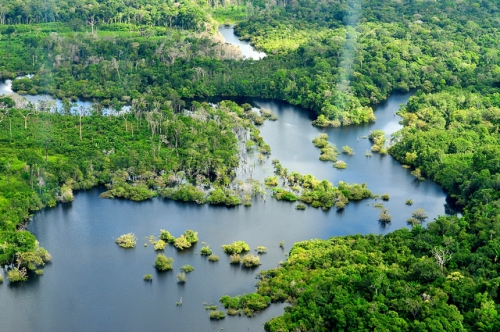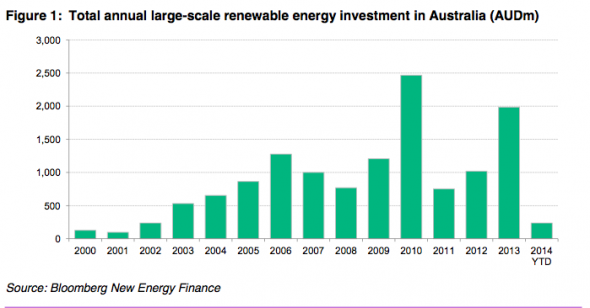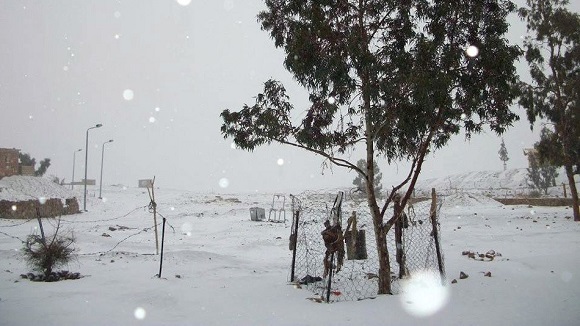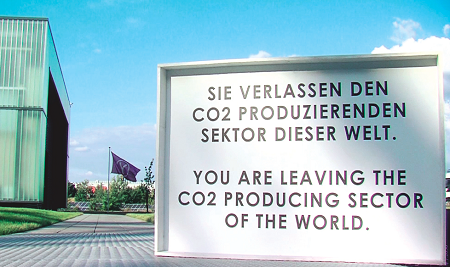1. Byron Bay’s world fist solar train
It looks sexy, the new solar train in Byron Bay pioneered by reclusive rich lister Brian Flannery, who made his fortune in coal mining:
It looks sexy, the new solar train in Byron Bay pioneered by reclusive rich lister Brian Flannery, who made his fortune in coal mining:
1. The Amazon is drying

Since 2000, rainfall has decreased by up to 25% across a vast swath of the southeastern Amazon, according to a new satellite analysis.
The area of concern is 12 times the size of California. The Amazon overall takes up 25% of the global carbon cycle that vegetation is responsible for, so it’s a significant carbon sink. With further drying the Amazon could become a carbon source rather than a sink.
Causes are not clear, but it’s possible that rainfall patterns have moved further north with global warming.
In related news, the re-election of Dilma Rousseff as president is seen as a significant negative for the environment in Brazil.
2. Great Barrier Reef protection plan ‘ignores the threat of climate change’
In its formal response to the Reef 2050 long-term sustainability plan, which was drawn up by the Australian and Queensland governments, the Australian Academy of Science states the strategy is “inadequate to achieve the goal of restoring or even maintaining the diminished outstanding universal value of the reef.”
There is “no adequate recognition” in the 2050 plan of the importance of curbing greenhouse gases.
Professor Terry Hughes, director of the Australian Research Council Center of Excellence for Coral Reef Studies and an academy fellow, said the plan was focused on the sustainable development of four “mega ports” adjacent to the reef, rather than conservation of the reef itself.
The Great Barrier Reef has lost around half its coral cover in the past 30 years. The question now is whether UNESCO will list the GBR as endangered.
3. Limiting global warming to 2°C is unlikely to save most coral reefs
In this recent post I mentioned that “preserving more than 10 per cent of coral reefs worldwide would require limiting warming to below +1.5°C (atmosphere–ocean general circulation models (AOGCMs) range: 1.3–1.8°C) relative to pre-industrial levels”. Following the links, the paper by K. Frieler at al is here.
It annoys me that the dangers to reefs from temperature change and ocean acidification are almost never mentioned, even by greenies. Opposition pollies should be speaking up too! That paper has been around since 2011.
4. Carbon capture and storage research budget slashed
The government has cut almost half a billion dollars from research into carbon capture and storage – which the Intergovernmental Panel on Climate Change (IPCC) deems crucial for continued use of coal – despite the prime minister insisting coal is the “foundation of our prosperity”.
In the budget the government cut $459.3m over three years from its carbon capture and storage flagship program, leaving $191.7m to continue existing projects for the next seven years. The program had already been cut by the previous Labor government and much of the funding remained unallocated.
John Connor, the chief executive of the Climate Institute, said CCS “has to be one of the clean energy options available because all the modelling says that to avoid temperature rises of more than two degrees, we have to take carbon dioxide out of the atmosphere”.
The first full-scale CCS power plant, the Boundary Dam Carbon Capture and Storage Project in Canada, opened last month.
5. Poland rejects zero coal by 2100
Poland and a bunch of eastern Europe countries “have categorically rejected the target put forward by the world’s top climate scientists to reduce carbon emissions to zero by 2100 to avoid dangerous global warming…”
You might recall that when Poland hosted the UNFCCC Conference of Parties in 2013 it was positively promoting coal.
The EU has not yet apportioned the effort between countries in planning to meet recently announced emissions reduction targets. The fun is about to begin!
6. Roof top solar in San Francisco
New regulations in San Francisco will require new buildings to have roof top solar or gardens or both.
7. Tesla solar supercharging network
Tesla is rolling out a solar supercharging network for electric vehicles throughout the world eventually. Soon they will make a beginning in Australia.
The superchargers provide half a full charge in as little as 20 minutes, and are usually located near amenities like roadside restaurants, cafes, and shopping centers. Usually they have between 4 and 10 stalls.
The $5 billion “giagfactory” to be built in Nevada will generate more than 100% of its electricity needs with wind and solar.
The world is changing!
8. News of energy storage is a big, big deal
So says Sophie Vorrath at RenewEconomy:
The big announcements keep coming from the energy storage sector, with news this week that US behind-the-meter startup, Stem, has been tapped to provide 85MW of distributed energy storage to households in the West Los Angeles Basin.
The deal, a multi-year agreement awarded to Stem by Southern California Edison (SCE), marks America’s largest distributed energy storage project to date, and the first time energy storage has competed with traditional energy sources like natural gas at this scale.
For its part of the deal, Stem will deploy its advanced, behind-the-meter energy storage technology at customer locations in the Western LA Basin to act as dispatchable capacity to enhance the local reliability of the region.
In other words, using the combination of storage and its proprietary software platform, Stem will allow customers to monitor and manage energy use, which in turn will provide additional capacity to SCE.
9. Billboard banned
You may have heard that Brisbane Airport banned a billboard suggesting to incoming G20 delegates that climate change should be on their agenda. Apparently the billboard was “too political”.

Getup and a bunch of other NGOs are campaigning to have the decision reversed.
The billboard was based on the experience of South Australian grape grower David Bruer, a farmer from South Australia who lost $25,000 worth of grapes in one day when temperatures soared to 45°C last year.
Climate Progress has picked up on the story:Australia’s clean energy development plummets below Algeria, Myanmar, Thailand, and Uruguay .
Large scale clean energy development is basically dead in Australia, thanks to the Abbott Government’s negativity and delays. Giles Parkinson says that the Government is effectively trashing the industry:
Bloomberg New Energy Finance data shows that Australia is on track to record its lowest level of asset financing for large-scale renewables since 2002 – as just $193 million was committed in the third quarter of the year. From ranking No 11, in the world in 2013, Australia has fallen behind Algeria and even Myanmar.
This graph tells the story:

Australia, which should be one of the world’s leaders in the industry, is seeing its industry collapse. The three biggest Australian investors in renewable energy are in deep trouble.
Industry Funds Management is being forced to write down the value of Pacific Hydro, the largest specialised investor in renewables in the country, by $685 million, according to the Australian Financial Review. This from a business that was to have been floated a year or so ago with a value of more than $2 billion.
Infigen Energy, the largest listed investor in renewables, has said it is facing massive writedowns, and potentially taking dramatic action to protect shareholder funds. It has brought Australian investments to a halt. So has Silex Systems, which has effectively abandoned the solar industry.
International investors have also made clear that their investment in Australia will end soon un less policy stability is restored. These include First Solar, Chinese wind turbine leader Goldwind, and numerous others. The US-based Recurrent Energy has already packed its bags, Spanish based FRV has said its $1.5 billion pipeline is at risk.
Australia’s year-to-date investment of $238 million in large-scale renewables development so far this year compares to Canada’s $3.1 billion.
The world leaders are now China and Japan.
China may add more than 14 gigawatts of solar capacity this year — almost a third of the global total, according to BNEF.
China is fast approaching its goal of installing 35 gigawatts of solar by the end of 2015.
Apparently they believe in picking winners and subsidies, as does Japan:
Japan, the world’s second-largest solar market, increased spending 17 percent to $8.6 billion in the third quarter. Japan has approved about 72,000 megawatts of clean energy projects since the country’s feed-in tariff program started in 2012, with about 96 percent being solar projects.
Meanwhile the LNP have entered into negotiations with Labor on the Renewable Energy Target, presumably having given up on PUP and the cross bench. Labor seems to favour a numerical target similar to the status quo, whereas the LNP favours an actual 20% target, which would be a reduction and disastrous for the industry. Labor seems to be prevailing. There is talk of an exemption for aluminium processing.
We’ll have to wait and see whether what comes out is too little too late, and whether the LNP plays fast and loose with yet another industry sector.
This post started out as four related items in Climate clippings. When a fifth showed up I decided to extract them and put them in a separate post. Hence it is a collection of opinions and perspectives rather than an analysis of the future of coal as such. Still, a message seems to emerge.
BHP calls for carbon pricing
Believe it or not Andrew Mackenzie, CEO of BHP Billiton, has called for a price to be put on greenhouse gas emissions to address the threat of global warming.
Talking in Houston Texas on the future of fossil fuels and carbon emissions Andrew Mackenzie said BHP needs to think carefully about controlling its carbon emissions. He wants BHP to lead the way. BHP is the world’s largest mining company and the third biggest company in the world.
Beyond coal the company is also a major player in shale gas in the USA, investing a cool $US20 billion in 2012.
Mackenzie was on message about ‘clean coal’, spruiking the virtues of carbon capture and storage (CCS).
Rio weighs in
Rio Tinto’s head of energy, Harry Kenyon-Slaney, also weighed in saying “Idealistic discussions” about climate change should be abandoned and Australians should recognise that coal will remain an important energy source for decades.
Coal will continue to “do the lion’s share of heavy lifting” to meet energy demand, he says.
Rio has invested $100 million in carbon capture and storage.
Martin Ferguson, now an adviser to the Australian Petroleum Production & Exploration Association:
stepped up criticism of the Coalition government’s emissions-reductions policies and called for the watering down of the renewable energy target, which he said was undermining the national electricity market.
Tristan Edis comments
Tristan Edis comments on Rio Tinto’s clean coal idealism.
He reckons CCS would be great if you could also retrofit it to existing coal-fired power stations, implement it at large scale and a reasonable cost and start doing it by, say, 2025.
The Australian Coal Association instituted an industry-funded initiative to progress zero-emission coal with a levy and created ACA Low Emissions Technology Ltd (ACALET) to undertake initiatives. Unfortunately from 2012-13 the requirement to pay the levy was suspended and ACALET is now concentrating on promoting the use of coal in Australia and overseas.
Edis reports that Industry Minister Ian Macfarlane seems to be willing to acknowledge that carbon capture and storage is a pipedream.
One senior Liberal referred to it as ‘vaporware’ (new computer software promised by companies to be delivered in the future that never eventuates but scares off competing software development).
The end of coal?
Paul Gilding has called the end of coal and the dawn of renewables, especially solar.
He believes the fossil fuel industry live in a delusionary analytical bubble, convinced of their own immortality. They are about to be swept away. Markets can be brutal.
The top 20 European utilities have lost $600 billion in value over the past 5 years.
Tesla, presumably because it makes electric vehicles (see also below), is now worth more than half GM although GM makes 300 times as many cars.
HSBC’s Global Solar index rose 65% last year and is already up 23% in 2014.
Underground coal gasification
Trials are underway or planned in diverse parts of the world in burning in situ coal that can’t be mined, according to an article by Fred Pearce in the New Scientist (paywalled). The process is underground coal gasification (UCG).
The potential is enormous, with enough coal available to supply the world with energy for 1000 years. For example, 70% of the coal in the UK has never been mined. One company has a licence to prospect for UCG sites beneath more than 400 square kilometres of the North Sea.
The attraction of UCG is not just power production. The process produces methane, carbon monoxide, hydrogen as well as CO2. The Brits see potential to use these chemicals as feedstock to revitalize their industrial chemicals industry. The article lists the following uses:
CO2 can be reinjected into the void created by the burnt coal.
The article refers to a 2007 MIT study which found that commercial CCS was unlikely before 2030. Undaunted Myles Allen, an Oxford University climate scientist, reckons that CCS is the “only practical way forward”.
Christiana Figueres is hopeful
Christiana Figueres, Executive Secretary of the UN Framework Convention on Climate Change (UNFCCC), points to 60 countries with 500 pieces of climate legislation, and is confident that an international climate change agreement will be delivered on time in 2015. She looks forward within 20 years to the time where everything new we do will be carbon neutral.
She does see a need for research into energy storage – batteries – and into CCS.
It is only with marketable CCS that we will be able to use the fossil fuels that we need. Storage and CCS would be my top two choices for technology investment.
If so someone, for example BHP and Rio, get cracking.
Meanwhile…
Investment bank Morgan Stanley says it has been overwhelmed by the response to its recent analysis which suggested that the falling costs of both solar modules and battery storage presented a potential tipping point that would encourage huge numbers of homeowners and businesses in the US to go off grid.
And Tesla is building a $5 billion ‘gigafactory’ for battery production, then providing an
emergency power service by monitoring the power levels in home batteries and delivering replacement batteries in the event home batteries run out of power.
Someone should tell Andrew Mackenzie and Harry Kenyon-Slaney they’ll need to shake a leg with CCS. Schumpeter’s creative destruction seems to be at work in the energy industry.
Update: Murray Energy, the largest independent coal producer in the US, is suing the EPA for not taking into account job losses when formulating emissions regulations.
 These posts are intended to share information and ideas about climate change and hence act as a roundtable for readers to contribute items of interest. Again, I do not want to spend time in comments rehashing whether human activity causes climate change.
These posts are intended to share information and ideas about climate change and hence act as a roundtable for readers to contribute items of interest. Again, I do not want to spend time in comments rehashing whether human activity causes climate change.
This edition begins with a couple of items on extreme weather, but is mainly about solar electricity. Once again, thanks to John D for providing some links.
Recently snow fell across the Middle East, with pictures from Egypt, Israel, Syria, The Lebanon and Iran.

Conditions in refugee camps in the area must be horrific. Flooding was general throughout the area, including Gaza.
See more photos of extreme weather.
Lest you think global warming has gone away, November 2013 was the globe’s warmest November since records began in 1880, and the 345th consecutive month with global temperatures warmer than the 20th century average. Continue reading Climate clippings 90
 These posts are intended to share information and ideas about climate change and hence act as a roundtable. Again, I do not want to spend time in comments rehashing whether human activity causes climate change.
These posts are intended to share information and ideas about climate change and hence act as a roundtable. Again, I do not want to spend time in comments rehashing whether human activity causes climate change.
This edition is completely about implementation issues and is largely based on a number of links drawn to my attention by John D, for which gratitude and thanks. I’ve restricted the offering to six items to make it more digestible.
A German company is developing relatively large scale battery storage (up to 10MW-sized battery parks) which could “stabilise the grid faster, cheaper and with greater precision that conventional generation.”

It says that these systems can substitute 10 times the capacity from conventional generation – coal, nuclear and gas – and at a fraction of the cost. According to Younicos spokesman Philip Hiersemenzel, each battery park can be installed at around € 15 million, which means that for an investment of €3 billion, conventional generation in Germany’s 80GW would no longer be needed – at least for frequency and stability purposes. Continue reading Climate clippings 88
I’m not planning to do posts on the upcoming election apart from link posts if I see anything interesting and/or important. The post on the Murdoch’s intervention started out as a link post, but then I warmed to the task. While this space is open I’d like to explore a theme that came from a comment in reaction to the LNP ‘solution’ to the asylum seeker ‘problem’. I can’t find it now, but someone asked, “What have we become?”
Moreover, what will we become? We have a choice, and in our response to the stranger in need who has chosen us, we either grow or diminish ourselves.
The task is ambitious and I’m not academically equipped for it. I’m not speaking as a philosopher or a sociologist, just “someone who is trying to sort out his ideas”, so the results may be modest. Some of the posts may not appear to be directly on the topic, but I hope all will fit together in the long run.
 Meanwhile I’ll try to keep some information flowing on climate change. Both these projects may be of more use than any contribution I can make to an election here in Oz. This time CC will be free flow rather than numbered items, to save time. I’ll use bold to identify the topics.
Meanwhile I’ll try to keep some information flowing on climate change. Both these projects may be of more use than any contribution I can make to an election here in Oz. This time CC will be free flow rather than numbered items, to save time. I’ll use bold to identify the topics.
Arctic ice is losing its reflective sheen. We all know that ice reflects more incoming radiation from the sun than does open water. Now by analysing 30 years of satellite data scientists have found that albedo of the ice itself at the end of the summer is about 15% weaker today than it was 30 years ago.
The cause of the darkening is
partly due to thinning ice and the formation of open water fissures, and partly because in the warmer air, ponds of liquid water form on the surface of the ice. The shallow ponds on the ice can dramatically reduce reflectivity and increase the amount of solar radiation that the ice absorbs.
 These posts are intended to share information and ideas about climate change and hence act as an open thread. This post has emphasised adaptation and mitigation, essentially what we need to do to achieve a safe climate.
These posts are intended to share information and ideas about climate change and hence act as an open thread. This post has emphasised adaptation and mitigation, essentially what we need to do to achieve a safe climate.
Comments, about science, observations, impacts, and future predictions are welcome. I do not, however, want a rehash of whether human activity causes climate change.
Bernard Keane Looked at the astonishing trend in mining company donations to political parties:

Sandi Keane adds some value in her two part series on the cartelisation of the major parties. Bernard wrote:
The sheer scale of mining company generosity illustrates why Tony Abbott remains committed to repealing the carbon pricing package and the mining tax.
Sandi added:
He might also have added that if Abbott wins office on September 14, we will no longer have a democracy but an oligarchy – a government run by powerful mining and media magnates looking for a return on their investment – with George Pell as spiritual adviser. As Keane tweeted recently:
“Australians are a bunch of sheep about to hand themselves over to a pack of wolves”.
The weekend was a bit ordinary for me, but as supercoach Wayne Bennett says, if you can’t say anything nice say nothing. That’s how he addressed his troops after the thrashing they got in the previous week. This week they creamed the opposition!
This CC concentrates on climate mitigation, the practical stuff, rather than science, observations and future predictions. What I’m stepping around at the moment is politics, policy, opinion etc.
This image at Clean Technica indicates the potential of renewable energy. Please note that the amounts for coal etc are total reserves, whereas the renewables are annual.

I’m not sure the natural gas is accurate as there is a lot of unconventional gas around. Continue reading Climate clippings 74